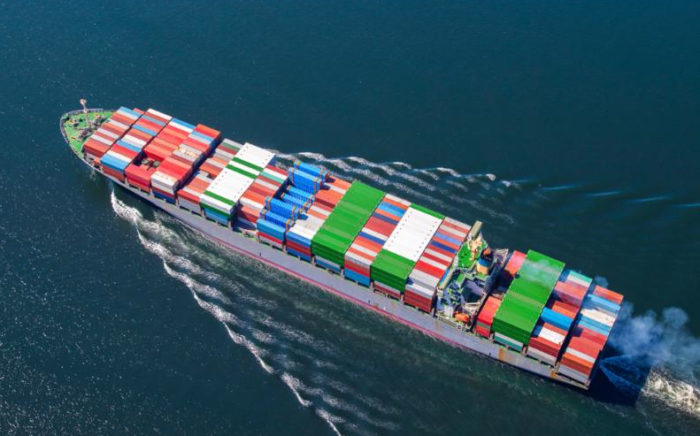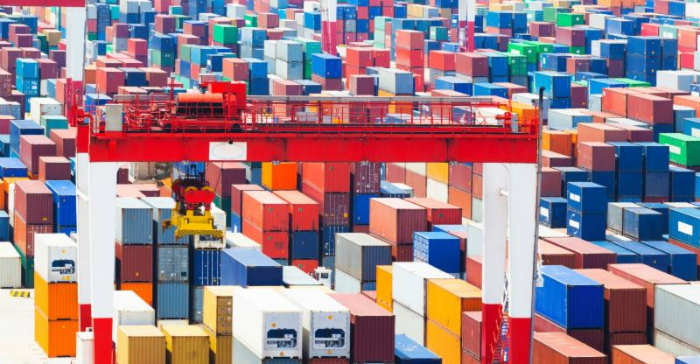What is the cost of international logistics?
International logistics is quite different from those of familiar domestic shipping because the cost includes the fees of goods going through the border of at least 2 countries twice. The goods have to exit one country, and then enter another one. The cost is then further complicated by
the law and legal systems for customs, tax, specialty government rules, and logistics handling. Using a shipment from China to USA as an example, the freight has three physical transportation legs: First leg would be the local Chinese shipping using a truck, train, or a river boat, to ship from a factory site to an international loading port such as Shenzhen Port; the second leg is the international ocean shipping from Shenzhen Port to LA port; The last leg is the USA local shipping from LA port to destination, such as Denver, Colorado, using a truck or a train. Thus, naturally, the freight cost consists of these three legs of transportation. Each transportation cost is a variable that depends on distance, season, weight, and local competition. However, the total logistics cost does not stop here.
Due to the governance of each country, there are two extra sets of costs: China export cost, and USA import cost. They have similar cost structure with minor differences because of different legal systems.
For export, different country has different rates. As a reference, the standard China export fee, which is broke down as below, could be $600 – $750 for an ocean freight, which includes:
- Container Loading Fee
- Bill of Lading fee
- Booking fee
- Crane Charge
- Custom Data Submission
- Custom Clearance Fee
- Port Operation Fee (THC)
- Terrorist Control Fee (AMS)
- Carrier Equipment Management Charge
- Export Data Management Fee
- Export document fee
- Port Security fee (ISPS)
This is mostly a fixed fee for each shipment going out of China. Then, for the USA import fee, which starts from $300+, includes:
- Import handling
- ISF (Importer security filing) fee
- Import custom clearance charge
Do note that duty and issuance are extra, and are separate items that depend on government laws. Of course, other country will have different fee cost.
How about air freight? Interestingly, air freight or express shipment usually have lower handling fees, although the cost structure is similar. They go through different ports set-up with special government agreements. But, do not forget the shipping cost itself could be 20 times higher than ocean.
How to reduce the transportation/shipping cost?
There are three things you can do to plan ahead and get lower cost. The mechanism is very similar to booking a flight or hotel when you are planning a vacation.
1. Volume discounts
Larger volumes can get significant discounts. Scale matters a great deal in this industry. Always tag along with larger users to get better deals on shipping.
2. Plan ahead
Remember when you booked your holiday fares? Booking earlier can save money. Try not to rush orders, which will often lead to high shipment costs.
3. Reduce number of shipments
Ship in bulk is the way to go. Since the handling fee is charged per shipment, Just-In-Time (JIT) small shipments could cost a great deal in handling fees. Also, if you are shipping less than a container load, additional fees are going to be added due to the extra handling of your pallets and paper work, which is often called the “Golden Touch”. In general, if good are more than 1/3 of a container, it is better to use a full container instead, because the cost is likely the same.
4. Reduce local shipping
Contradictory to your intuition, local shipping costs can be much higher than international ocean freight costs, especially from a large country such as China or USA. Minimizing the local cost is very important. For example, Chinese local shipping charge can cost you thousands of dollars if sub-contractors are far away from each other if you want to consolidate them. Also, the export paper work can become complicated because of different taxation rules of different origin provinces, and get extra charges due to regional government tax, and custom requirement issues.

How to reduce the handling cost?
Once you know the mechanism of handling fees, you know reducing the number of shipments is the key, because the handling fee is mostly a fixed cost. Of course, you can get brokerage discounts if you have a large number of imports or exports.
How do I get faster delivery?
Yes, you can get “faster” truck, train, or boat by using those express lines which do not stop by too many stops to get goods on and off their vehicles. However, you will have to pay more to have your goods arrive earlier. If you examine the total logistics, there are three legs of shipping. The cost of each leg of shipping depends on the priority of goods. Usually, better paid jobs have higher priority shipping. As a result, your goods could arrive earlier. For the lowest paid shipment, it usually uses left over capacity of trucks and ships. Sometimes it could even take twice as long for goods to arrive.
How do I balance my freight cost and JIT?
Just-in-time (JIT) is a great concept for most larger volume producers, such as Toyota auto parts. In general, JIT breaks down larger volume shipments into small pieces of supply chain. Now, if the volume and value of the goods is “too small”, the cost of total freight will become a significant cost. So, from the beginning of the supply chain design, you need to plug in all your parameters into the model of optimization in order to minimize the total cost.

